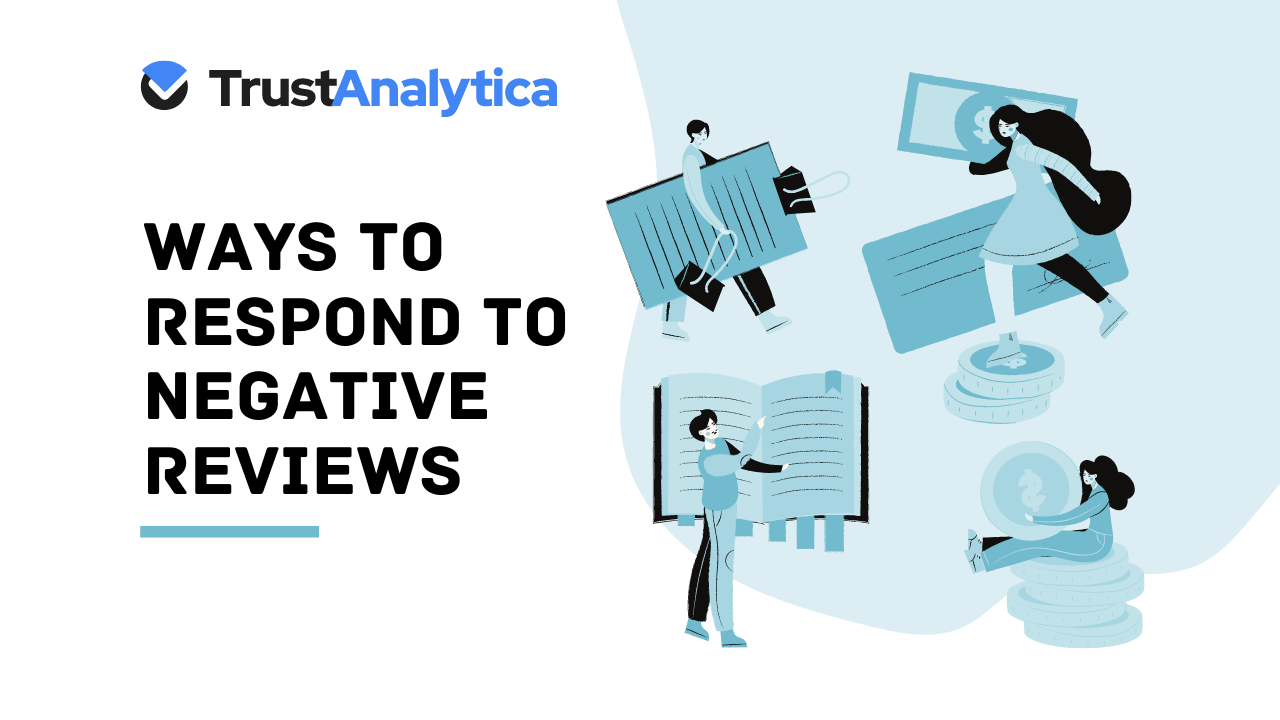Updated: 21st November, 2023 In addition to the real existence of companies in brick-and-mortar offices, they have another presence – a virtual presence. Everything they do in the real world and the way they do it is reflected in the virtual world, for better or for worse. Depending on that virtual persona, companies set their […]

Updated: 21st November, 2023
In addition to the real existence of companies in brick-and-mortar offices, they have another presence – a virtual presence. Everything they do in the real world and the way they do it is reflected in the virtual world, for better or for worse. Depending on that virtual persona, companies set their policies and strategies to meet the needs of their clients.
Still, it is getting harder for brands to stay aloof from the internet. With the rising number of smartphones and connectivity, everyone goes online to study, research, and make up their minds before making a transaction with a business.
Modern consumers also want to know what others have to say about a specific company. In the form of online feedback, word of mouth travels with electronic speed. That’s why both small businesses and large corporations need to have reputation management software to keep tabs on
Brand reputation is composed of two distinct, quantitative and qualitative building blocks. While the former is easy to gauge and analyze using mathematical and analytical tools, it is hard to comprehend the real reach and scope of the metrics related to the latter.
Qualitative analyses, surveys, sentimental analyses, and stock reviews are some of the best ways for marketers to know how customers and prospects feel about a brand.
In terms of a quantitative approach, the following are three definitive tools or benchmarks that professionals employ to find the right number:
In this section, we will go through these quantitative measures to evaluate the true worth of a brand’s corporate reputation.
One of the most commonly used indicators for measuring a brand’s worth, albeit simplified ones, are the stocks and market sentiments. Whatever the stakeholders are thinking about a company is reflected in its performance in the stock market.
That’s why whenever a company is dealt with a serious blow on any non-financial front, either social or political it often materializes in the form of a stock boom or crash.
Here is a case study to further understand the relationship between market perception and the stock worth of a brand.
During the Cambridge Analytica scandal, the stocks of Facebook took a big tumble when the brand perception was severely hurt. Shareholders started dumping their shares in the market, leading to over $120 billion drop off in the social media giant’s stock price.
The best way to stay on top of the developments on both fronts is to track and analyze both the perceptive and stock side of a brand.
Brand reputation may not be a currency or a liquid asset by the stretch of the meaning, but still, it counts and it pays. According to financial research, the market’s trust and trustworthiness are reflected in both the brand reputation and financial standing of a company.
Both are directly proportional to each other. If one hits rock bottom, there is no way the other element could see a boom at the same time. And like negative reviews, it takes time to build financial legs but seconds to lose it, whether a scandal does the trick or any other public revelation.
In the case of SeaWorld, a revealing documentary showed the world the detrimental life orcas were living in the aquarium. The company lost previous dollars and much respect from the market due to the backlash from animal rights organizations and activists. SeaWorld is yet to come out of its financial pitfall due to a release in 2013!
It does not matter how much money consumers spend on a brand, if they are coming back to the brand at periodical intervals, such as the release of a new iPhone, these are the best customers it can have.
When a company manages to do that feat, it means that the company is connecting with its customers by providing them with just what they want. This multiplies from there. As happy consumers share their experiences with others, it creates an avalanche of new consumers and the cycle goes on.
In quantitative terms, there are three major steps to finding the extent of brand loyalty and customer retention:
Net Promoter Score can be found using annual surveys by the companies. If the score is high, a consumer will likely recommend the brand to others. In case of a poor score, the brand could see fewer repetitive consumers. This will impact stock prices as well as the financial statements of a brand.
This is part of a marketing strategy that shows how likely a consumer will recommend a brand in the future and make a purchase from your company. Companies can use the insights from CLI surveys to adjust their future course for better products and services.
Customer Lifetime Value is a direct tool that allows a brand to see customer retention and loyalty throughout their lifetime. It is a simple number that can be found by multiplying the annual revenue per customer and years of customer retention and then subtracting customer acquisition costs.
In case of losing long-term customers, a business will know for sure that something is wrong internally.
At this point, we have established that brand reputation is a combination of both qualitative and quantitative elements. Although the concept is intangible, many measures of it make it quantifiable and hence manageable.
In the section below, we will go through some of the mistakes that brands should avoid while measuring a brand’s reputation:
Now, let us dissect each of the mistakes and discuss them in detail.
A company is an amalgamation of many tangible and intangible elements. Whereas reputation is a perception of what this company could be. In other words, the perception of a brand is what stakeholders think about a company, either larger than life or just another hustler.
No matter what they think, it is necessary to keep the two apart and analyze them in their own right.
Not all stakeholders are created equal and they should not be treated as such, especially while determining the magnitude of the corporate reputation of a brand.
For instance, a company could be a white elephant for investors and shareholders, while market-leading for consumers as it was making new and exciting products for them.
Companies with low profit margins fall under this category.
In most cases, a company’s corporate reputation is more or less a measure of what people can think about it in impromptu situations. For instance, if someone asks a person who he or she thinks is a great company or brand, the answer is much dependent on what they can remember at the moment.
Following are some factors whose quality can affect the perception of the company by both the general public as well as for stakeholders:
There are other factors that contribute to the question of how to measure brand success besides these, but they are the most influential ones.
Behind numbers and analyses, there must be levers and quantifiers that determine the extent to which a number can affect the corresponding variable. In most cases where professionals don’t know how to measure the reputation of a company, they form a pseudo-econometric model with poor representation of variables against the factors.
That’s why the first step in determining a brand’s reputation is to devise mathematical models that can define the relations between variables based on their perceived or near-real value.
Public relations is different from brand reputation as it is reliant on what a business is doing or accomplishing, such as product releases, investments, etc. Good PR induces a sentiment in stakeholders and the general public which results in positive sentiments about that company. Still, the two are poles apart in terms of nature and scope.
This is another reason why professionals should use quantitative methods to gauge corporate reputation instead of measuring other vague factors.
After going through the article, readers will come to understand that the evaluation of corporate reputation requires both qualitative and quantitative elements. Between the two, professionals rely heavily on the latter as it produces quick and actionable results. Still, it does not mean that the former is devoid of any value.
Since the reputation of a brand is what people perceive it to be, this plays its part in determining its value. This article will help professionals keep away from the potential pitfalls while illuminating future courses to achieve both short and long-term goals.
 10 Ways to Respond to Negative Reviews + 10 Killer Templates!
10 Ways to Respond to Negative Reviews + 10 Killer Templates!  How to leave a google review In Google My Business profile?
How to leave a google review In Google My Business profile? 
